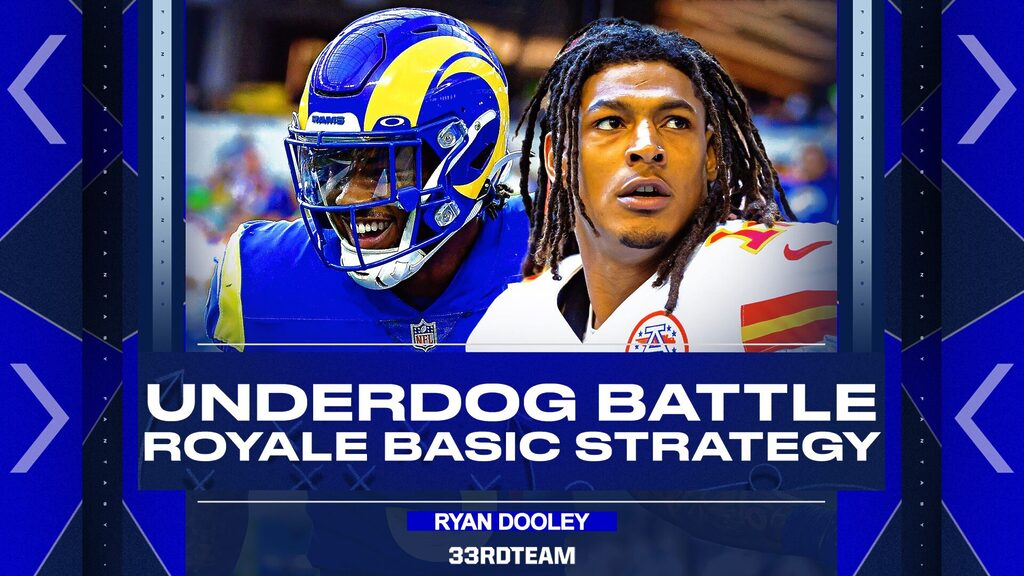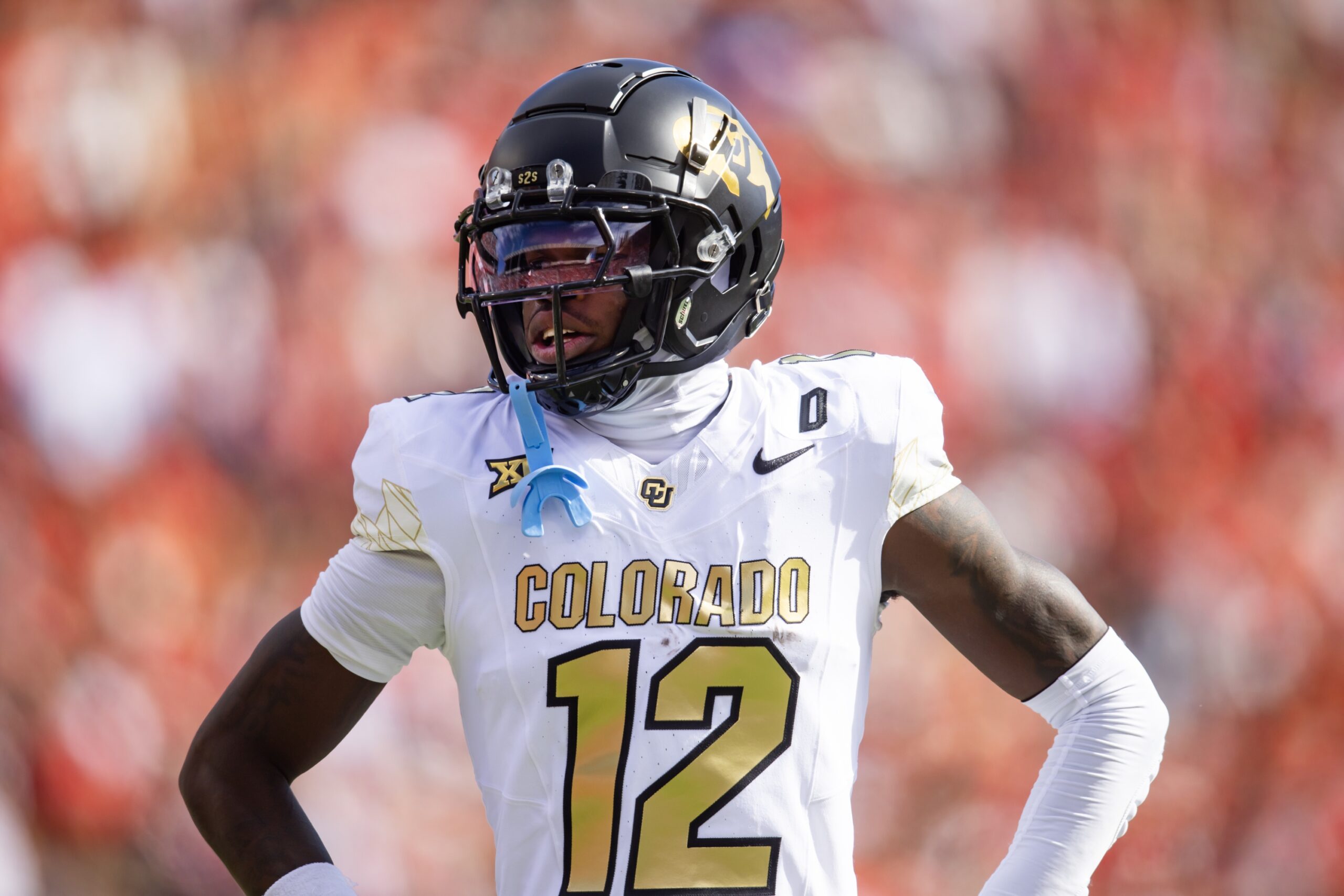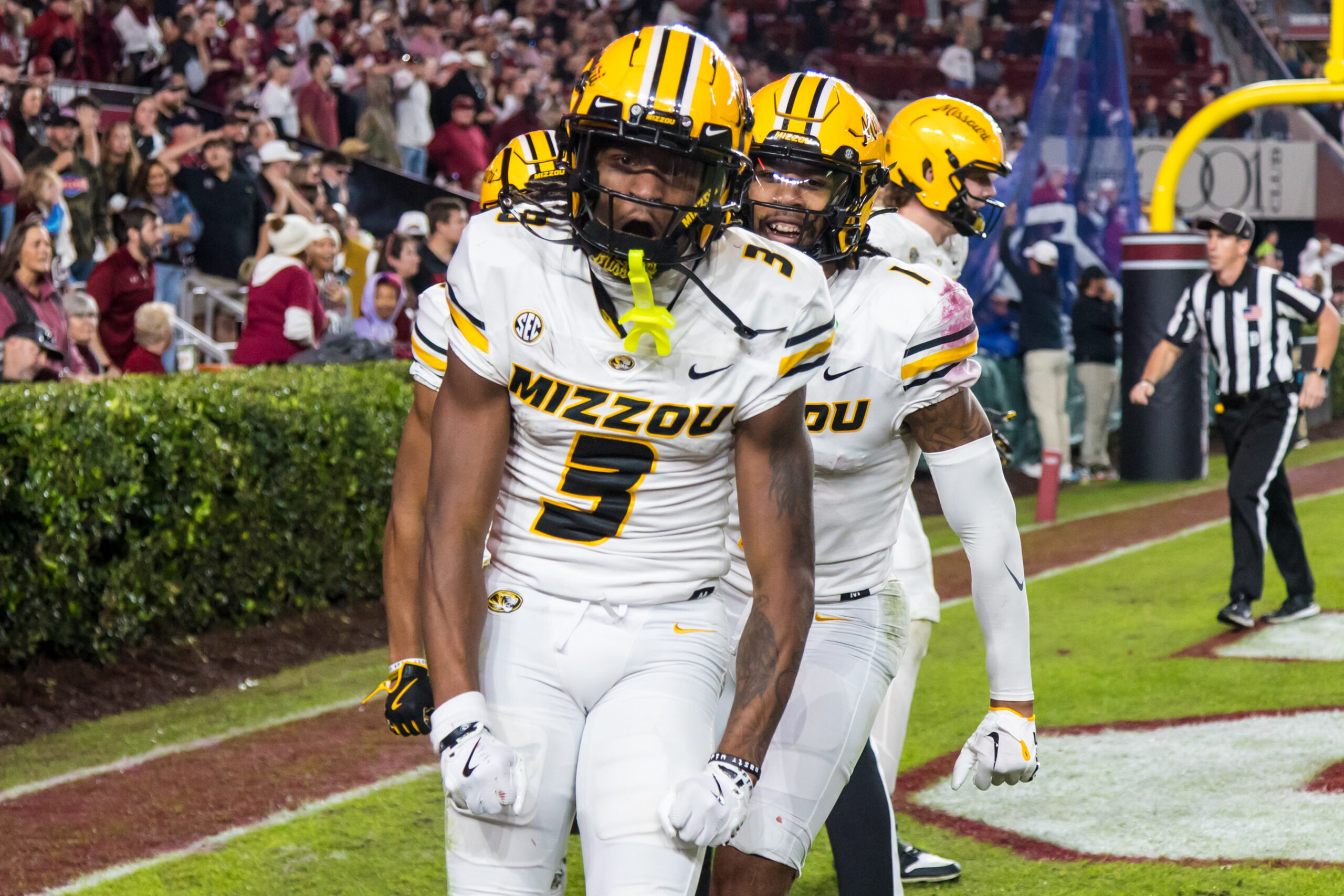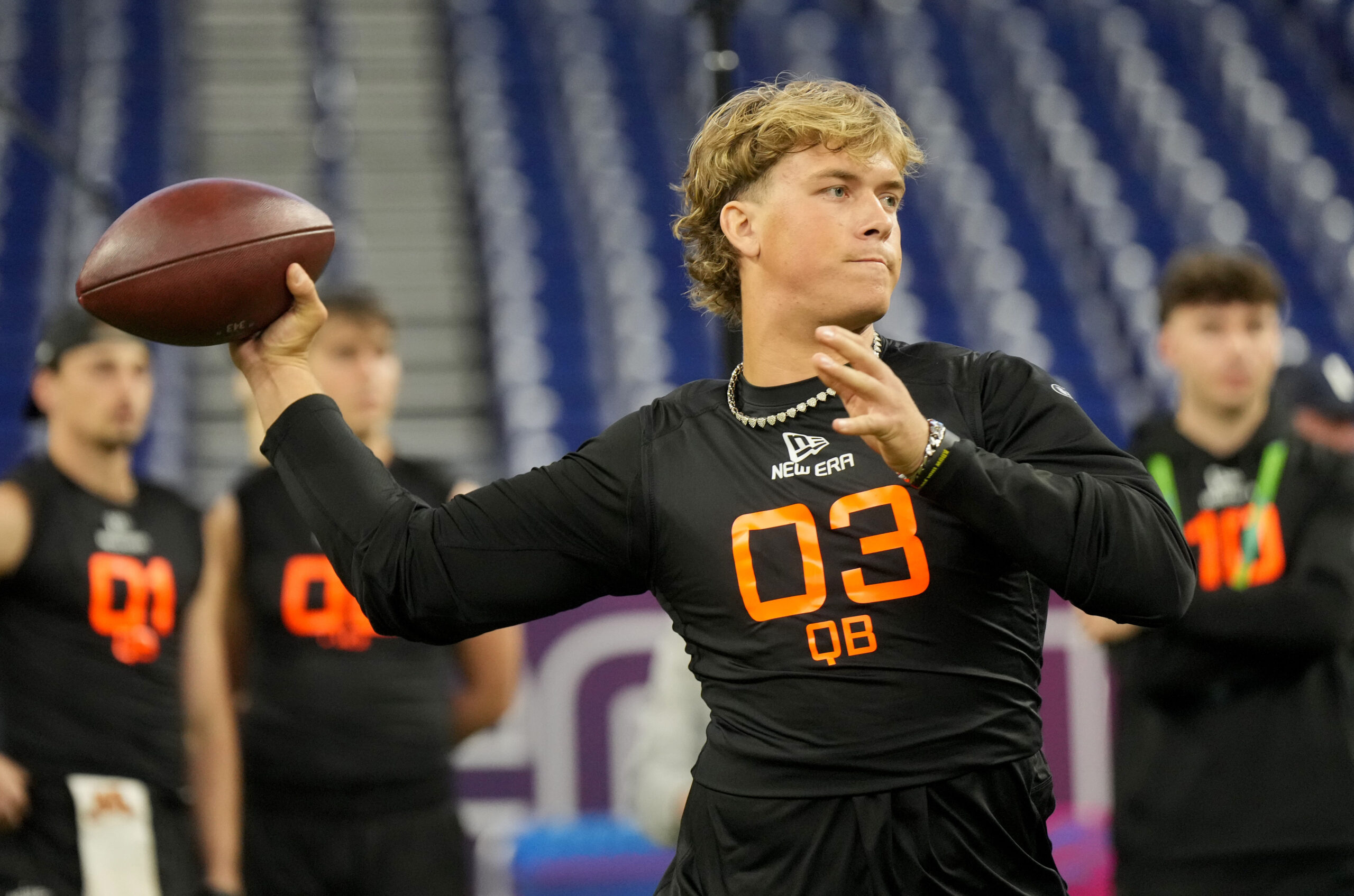Analysis
9/7/23
3 min read
2023 Fantasy Football: Underdog Battle Royale Basic Strategy

Think of Underdog Fantasy's Battle Royale contest like a DFS contest on DraftKings, except you select players via snake draft rather than based on salary constraints.
Battle Royale tournaments contain tens of thousands of entries, broken into six-person, six-round drafts. Each team consists of one quarterback, one running back, two wide receivers, one tight end and one Flex. Post-draft, your team competes with all teams from the same tournaments for a top-heavy prize payout.
Let’s go over a few principles for drafting so you hit the minimum requirements to build a solid lineup.
Principles For Drafting
Game Environments
Here, we refer to the projected total of each game per Las Vegas odds and the projected team totals.
This one might seem obvious, but it is important to digest each week to set the slate's landscape. We want to target players on high-scoring teams and teams in high-scoring games. On the flip side, we can use the low totals to help push us away from certain games, teams or players. This is important in identifying fades and targets.
Example: If the Los Angeles Chargers and Kansas City Chiefs are in a game with 54 projected points, that’s a much more friendly environment for fantasy point upside than the New England Patriots and New York Jets in a game with only 39 projected points.
Game Theory
One of the most efficient ways to pull ahead of your opponents is by utilizing uniqueness and leverage. Incorporate those two elements into every lineup.
Uniqueness
Be unique vs. other teams by drafting mostly undrafted players. If these players do well, less of the field will gain those points with you. The field is relatively sharp, and ADPs generally trend with projected points. However, with a draft size of just 36 players, plenty of mostly undrafted players project within fractions of points to players who are frequently drafted. After roughly the first three rounds, ADP does not matter much. This is a large part of the weekly strategy to embrace.
Example: Cam Akers isn’t drafted much in these 36-player drafts, but he could score multiple touchdowns in a workhorse role. While Aaron Jones is generally the better player in a vacuum, the field is acting like it is 100 percent certain Jones will outscore Akers when we know Akers can have a better fantasy day occasionally.
Leverage
Get leverage on other teams by drafting players who negatively correlate with mostly-drafted players. You get two wins with one event and need less to go right. If your player succeeds, it is likely coming at the expense of other, mostly drafted players. Football is chaotic, and this allows us to benefit from the chaos.
Example: Patrick Mahomes and Travis Kelce will always be drafted from the Chiefs, so you can take Isiah Pacheco instead. If Pacheco has two rushing touchdowns, it is coming directly out of the Mahomes-Kelce fantasy points pie, giving you leverage on many teams.
Roster Construction
Here are a few basic rules to follow while drafting your rosters.
Almost Always:
Stack quarterback with one pass catcher.
Do a game stack of any sort: two players on different teams in the same game.
Draft a mostly undrafted player.
Often:
Draft two elite players being drafted very high.
Play a leverage player against one-plus mostly drafted players.
Use a game stack that includes the quarterback.
Use a running back in the flex spot.
Rarely:
Draft two non-quarterbacks from the same team.
Follow The 33rd Team Podcast Network on Spotify and Apple Podcasts.






